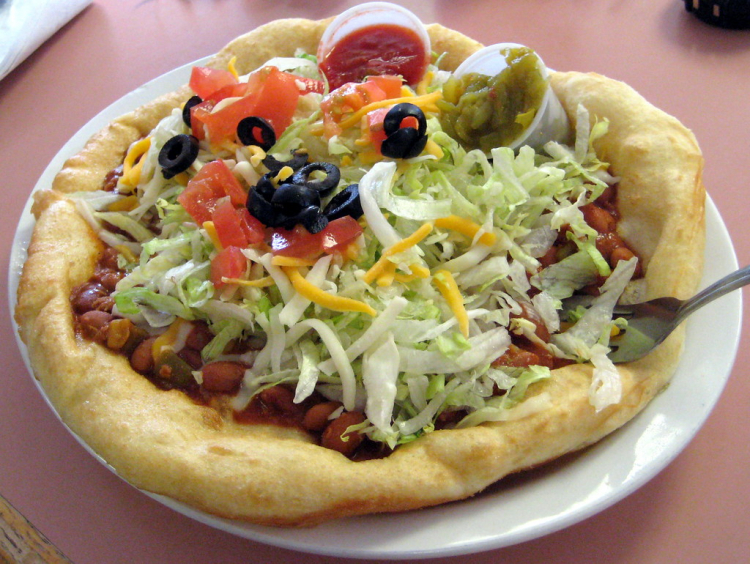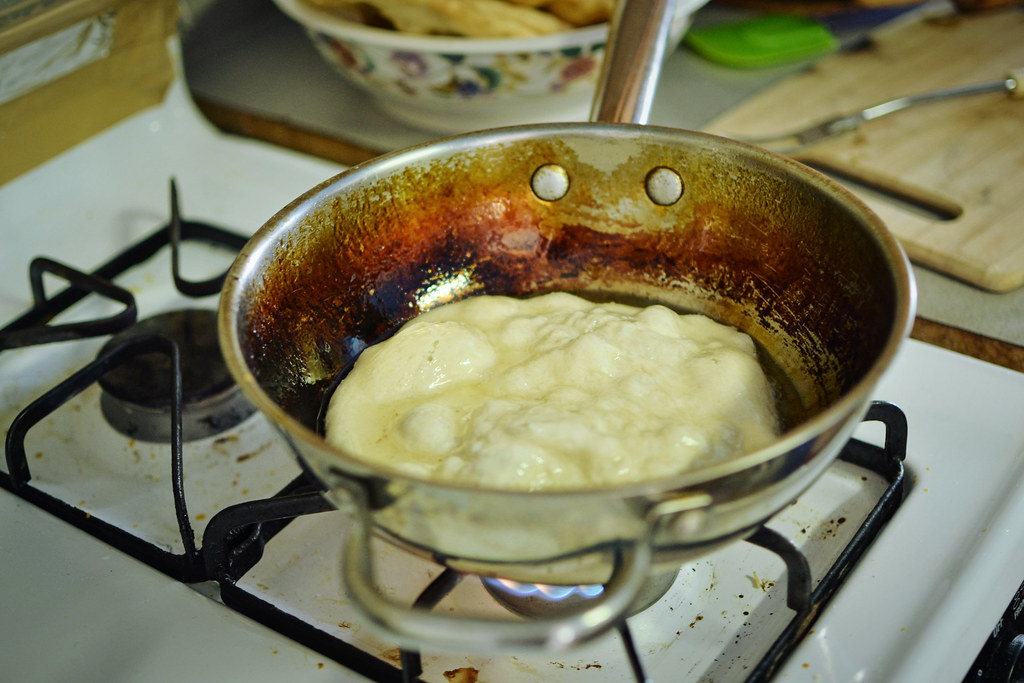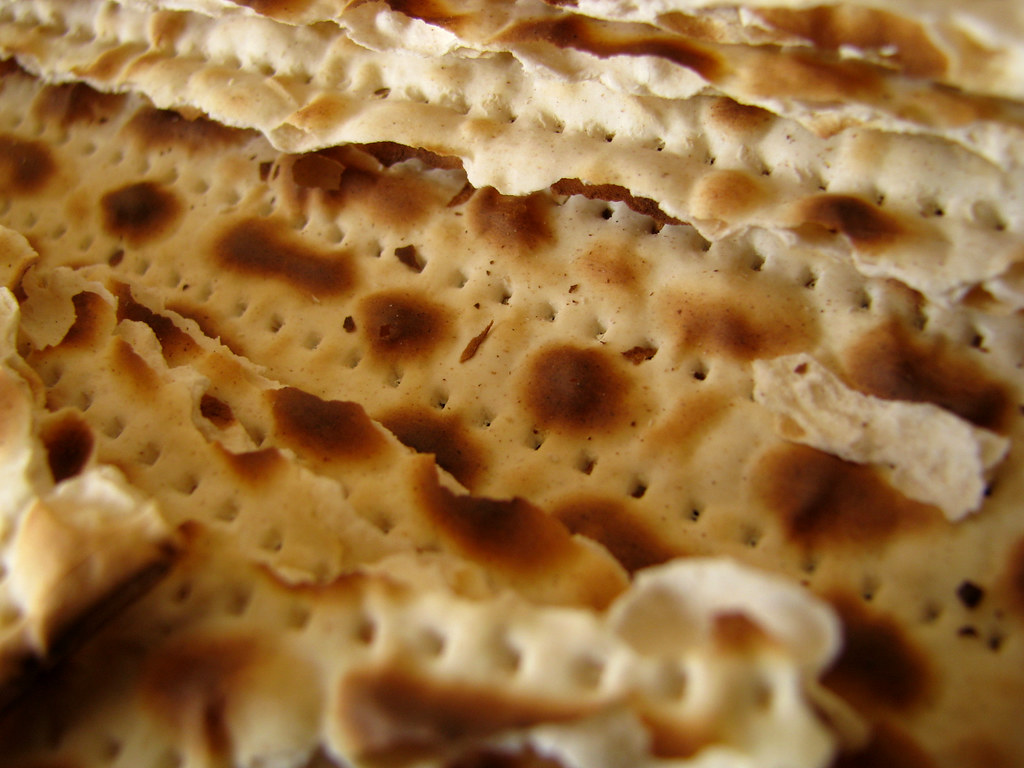Cultural Foods and Commodification

In every part of the world, unique recipes and dishes crafted throughout history help to define modern-day cultures. Given food's widespread importance, it can be difficult to decipher when idolizing it becomes problematic. But in places where past colonial influences have dominated, we can see how, sometimes, its true origins are ignored and popularization takes over.
For example, frybread is among the most important staples of traditional Navajo cooking, one that is respected and revered. Within many indigenous cultures, the skill of cooking frybread is thought of as a responsibility to be handled with pride and is passed down through generations. Without it, no good meal on the reservation is complete and no successful family gathering is planned. Though the ingredients are simple, with a combination of flour, sugar, salt, and lard, the popular has become essential to Diné culture. Indeed, the bread is so culturally embedded, few members of any tribe fail to question where the recipe originated from.
Diving deeper, you will find that frybread is actually not a traditional recipe and has only been a part of Diné life for 150 years. It was first introduced in 1864 when the United States government sent the Navajo tribe on was is known as the Long Walk, a relocation that many indigenous tribes were forced to make. The Navajo people were moved to Fort Sumner in New Mexico, a some 300-mile journey off of the sacred homeland known as Dinetah. Traveling on foot, many elders and children were shot because they were too slow. Upon reaching Fort Sumner, those surviving were given meager food to live on, including molding flour, measly coffee, and small rations of salt and fat. Forced to create something out of these ingredients, the Diné people birthed the now famous frybread recipe.
Traditional frybread being made. Image Credit: Flickr/monicadsShifting locations to New Orleans, po’ boys, originally called “poor boys,” are another similarly misunderstood delicacy. Dating back to the 1920s, the now iconic sandwich came from small beginnings as a half loaf of old French bread filled with scraps from the backs of kitchen restaurants that would have otherwise been thrown away. Some believe the sandwich began with the need to feed streetcar strikers in the south during the 1930s, while others credit two local chefs, the Martin Brothers. Though its origins are debated, all agree po’ boys, once sold for 10 cents each, were only eaten by those who could not afford anything else.
Despite its dark history, the meal is now loved by both locals and tourists. As the Crescent City becomes a hub for community and celebration, the simple recipe has grown more complex, with chefs pilling deep-fried seafood atop lettuce, tomatoes, mayonnaise and hot sauce. New Orleans' recent influx of tourism has meant that the demand and price for po' boys have risen, the sandwiches selling for up to $16 each. This hasn't deterred anyone though; po' boys have become a symbol of the city’s good times and people. Long-term locals have grown loyal to specific shops that have created their own intricate recipes that they all claim as the best. Families enter restaurants with warm greetings and will often stay to talk with the chefs about their home lives as they deep fry the seafood. The underlying connection between entire families, locals and tourists, young and old, seems to be these po’ boys.
A Domilice's po' boy. Image Credit: Noelle TrotterThere are countless other cultures that have had their now cherished dishes come from cultural oppression, even if they are not as commodified as frybread and po' boys. The matzah bread of Jewish peoples is one example. This cracker-like bread is eaten as a reminder of the Hebrews’ forced exodus from Egypt and their need to flee from oppression as slaves. The Hebrew Bible states that after God’s plagues upon the Egyptians, he ordered the Jews to leave immediately. With no time to let their bread rise, the unleavened matzah bread was born. The bread itself is not meant to be appetizing. In fact, it is made as a reminder of when that was the Jews’ only choice for all those who celebrate Passover. It serves as a testament to the strength of their culture during a difficult time.
Stacks of matzah bread. Image Credit: Flickr/Avital PinnickIn truth, it can be seen as ironic how so many of these communities end up glorifying what was once considered the bare minimum, the most a family in dire circumstances could ever dream of. This sugarcoating of cultural appropriation in the subtlest of forms is dangerous to the people who eat these dishes and to the cultures themselves. But to simply stop eating these almost sacred dishes, whether a part of the culture or not, is an impossible task. What can be done, however, is an acknowledgment to the history that brought these recipes about. With some awareness, cultural appreciation can be stopped on its way to becoming appropriation. For without acknowledging the past and its mistakes, what’s to stop us from continuing to make them?



